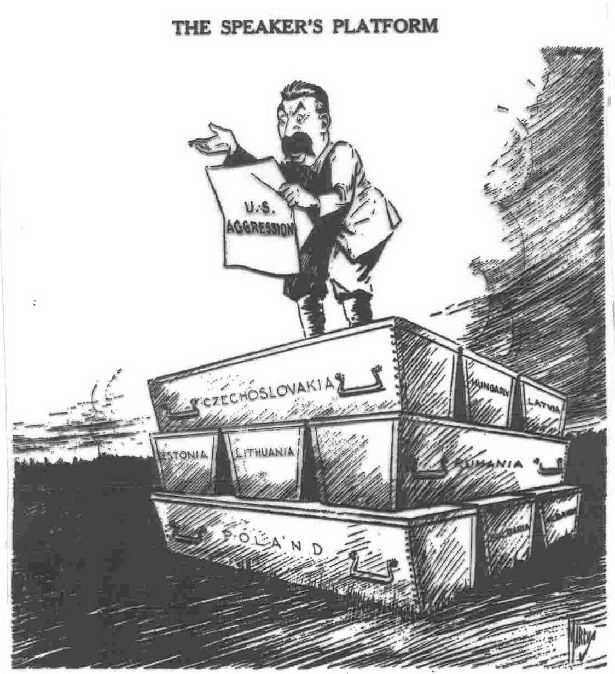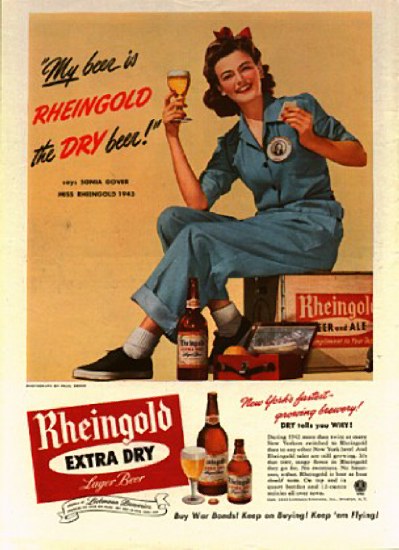mark-carlile.com | home
Image Gallery Part 2
October 5:

Elvis Presley represented the new wave of rock n' roll in the mid-50s


the Milton Berle Texaco Star Theater and I Love Lucy were two hit shows in the early years of television


television ratings from the early and late 50s-- variety shows, comedies, and westerns dominated the ratings

some thought that Nixon's appearance during televised debates swung a close election in Kennedy's favor


the 1960 election, and the county-by-county results (Kennedy counties in red, Nixon counties in blue)

Kennedy discovered that there was no "missile gap" disadvantage with the Soviets

the Peace Corps were an essestial element of JFK's plan to appeal to developing nations during the Cold War


maps of the Caribbean and the "Bay of Pigs" landing zone (1961)


the Bay of Pigs failure weakened Kennedy's hand at a summit with Khrushchev

the aftermath of the Berlin Wall-- "a wall is a hell of a lot better than a war"


high-altitude U2 and low-level surveillance photos of the Soviet missile bases in Cuba, 1962

the Cuban Missile Crisis-- the closest to "high noon" during the Cold War

the close escape of the missile crisis prompted more calls for coexistence and a nuclear test ban treaty with the Soviets
September 28:


the 1956 election, and the county-by-county results (Stevenson counties in brown or beige, Eisenhower counties in blue)

a graph of Eisenhower's approval ratings during his presidency


the postwar "baby boom"-- the birth rate rose and produced demand for children's items (the picture is what an infant required in its first year)

the suburban population increased dramatically after the war


the "new" suburbs-- "moving day" populated the newly built, uniformly designed housing developments such as Levittown

in the 1950's, population growth was concentrated in the "sunbelt" states


the rise of television created new products, and movie theaters attempted to compete

separate drinking fountains, mandated in many states by the "separate but equal" principle

even 10 years after the Brown v Board of Education decision (1954), desegregation had made little headway in most of the South


Jackie Robinson received death threats after breaking baseball's color line (1947), but within 12 years all major league teams had integrated


Rosa Parks being arrested for violating bus segregation policy, and then riding on a newly desegregated bus after the Montgomery boycott's success

the first of the lunch counter sit-ins, Greensboro, NC (1960)
September 21:

a "scoring" of the Cold War, mid-50s


a pro-Rosenbergs pamphlet, and a "blacklisting" journal

a graph of Truman's approval ratings during his presidency


the Eisenhower campaign, 1952

Eisenhower pledged to "go to Korea" if elected



Stevenson on the campaign trail, and artifacts of his campaign


the 1952 election, and the county-by-county results (Stevenson counties in brown or beige, Eisenhower counties in blue)


emphasis on nuclear deterrence produced civil defense appeals and private bomb shelters

brinksmanship-- "don't worry, I can always pull you back in time!"

the popular image of Ike as president

"Carry on, lads!"-- the downfall of McCarthy did not mean the end of anti-communist politics


reactions to the Soviet launch of Sputnik -- "So Russia launched a satellite, but has it made cars with fins yet?"

the Army was sent to Little Rock to enforce desegregation, 1957
September 14:

despite prewar distrust, alliance with the Soviets was stressed during WWII

post-WWII Europe

Germany is divided into occupation zones after the war and "nobody is happy"


competing postwar images of East and West-- the Soviets viewed the US as threatening economic domination and atomic war, while Americans feared "Red Fascism"

"If Italy Goes"-- an early example of fears of a "domino theory"


competing "internationalist" and "isolationist" views on the early Cold War


the Communist takeover in Czechoslovakia helped to pass the Marshall Plan, and further fears of Soviet intentions led to the formation of NATO (1949)

post-WWII Asia and the Pacific region


early Cold War setbacks included the "loss of China" and the Soviet A-bomb test (1949)

Korea, 1950-1953

the initial response to the Korean War was as a defense of democracy

retreat across the 38th parallel after the Chinese invasion, 1950


competing views of the situation in Korea-- MacArthur as a "flat-earther", and MacArthur being "hemmed in" by Truman and the State Department


Truman's "firing" of MacArthur was politically unpopular, and led to charges that Truman was out of his depth in foreign policy
September 7:


anti-Japanese sentiment after Pearl Harbor led to the forced internment of Japanese-Americans on the West Coast


pictures and advertisements emphasized the "Rosie the Riveter" aspect of women in the wartime workplace


"Woman-Power" and "The Kid In Upper 4"-- advertisements that attempted to reassure the nation that changing roles during wartime would not have permanent effects

in FDR's saying, "Dr. New Deal" was replaced with "Dr. Win The War" for the duration of the war

Roosevelt retained strong approval figures during the wartime period

FDR won votes by "defending" the "honor" of his dog Fala in 1944


the 1944 election, and the county-by-county results (Roosevelt counties in black, Dewey counties in white)

peacetime reconversion gave rise to economic fears

Truman had a rough first year in the White House

protestors demanding an end to military segregation, 1948

the Taft-Hartley Act (1947) angered labor unions and passed over Truman's veto


in 1948, Dewey promised to "clean house", and magazines referred to him as "the next president" even before election day

Truman's famous revenge


the 1948 election, and the county-by-county results (Truman counties in brown or beige, Dewey counties in blue, Thurmond counties in green)
August 31:

the "Big Three" of World War II-- Stalin, Roosevelt, and Churchill

World War II in Europe



Leaders of World War II-- Eisenhower, Marshall, MacArthur, and Oppenheimer


The D-Day invasion of 1944 led to V-E Day, 1945

World War II in the Pacific



wartime advertising both promoted the war effort and promised postwar prosperity


wartime workers-- constructing aircraft and "Liberty Ships"


posters encouraged public involvement in the war effort and often aimed at raising public morale



the fictional "Willie & Joe" came to represent the average G.I. in the public mind


rationed items during wartime-- tires and meat


ration books and ration coupons


ration books and posters warned against violating the rationing guidelines

an example of a scrap drive, encouraged by FDR and the government
August 24:

A sign too commonly seen in 1940 America



The start of World War II prompted fears that the US would be drawn in

protests against the Lend-Lease proposal, 1941


sentiment (of varying intensity) against Roosevelt's 3rd term bid, 1940


Opposing candidates in 1940: Roosevelt ("better a 3rd termer than a 3rd rater") and Willkie


war and peace dominated the 1940 campaign, with occasional additional trivial issues


the 1940 election, and the county-by-county results (Roosevelt counties in black, Willkie counties in white)

drawing draft numbers, pre-Pearl Harbor

1941 shipments to Britain were endangered by submarine warfare, while some questioned the continued sale of material to Japan


a scale model of Pearl Harbor constructed pre-attack by the Japanese, and the resulting attack